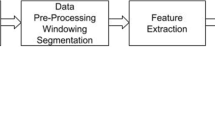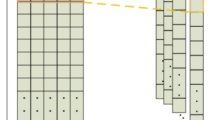Abstract
Human activity recognition is the most important field for supporting the everyday lives of elderly people and sometimes finding out suffering to several cognitive dysfunctions like Parkinson's disease and dementia. There are several techniques for studying human behavior, such as recent advancements in artificial intelligence and machine learning (ML) are also taken place. In this paper, a combination of NN with GRU-LSTM-CNN is proposed that enables the efficiency of their integration in daily recognition after classifying data automatically. Since LSTM is another integration of recurrent neural network (RNN), so it can be easily applied over temporal sequences. On the dataset (UCI-HAR) global average pooling layer (GAP), Flatten is applied over the connected layer in order to reduce down the model parameters. The datasets contain data from 18 everyday sensor-based activities as well as takes into account 6 actions within the proposed system. This paper proposed a hybrid model's gated recurrent unit, long short-term memory, convolutional neural network (GRU-LSTM-CNN) have been analyzed on the wearable sensors built-in for smartphones in order to recognize the human activities so to better understand the human behavior, respectively. The proposed technique is successful in providing a better accuracy level of 93.43% comparatively to the previous one.
Access this chapter
Tax calculation will be finalised at checkout
Purchases are for personal use only
Similar content being viewed by others
References
Lopez-Nava IH, Angelica MM (2016) Wearable inertial sensors for human motion analysis: a review. IEEE Sens J 16(15)
Liu Y, Nie L, Liu L, Rosenblum DS (2016) From action to activity: sensor-based activity recognition. Neurocomputing 181:108–115
Liu T, Bingfei F, and Qingguo L (2017) The invention relates to a wearable motion sensor and a method for resisting magnetic field interference
Lara OD, Labrador MA (2013) A survey on human activity recognition using wearable sensors. IEEE Commun Surv Tutorials 15(3):1192–1209
Ordóñez FJ, Roggen D (2016) Deep convolutional and LSTM recurrent neural networks for multimodal wearable activity recognition. Sensors (Switzerland) 16:1
Du X, Vasudevan R, Johnson-Roberson M (2019) Bio-LSTM: a biomechanically inspired recurrent neural network for 3-d pedestrian pose and gait prediction. IEEE Robot Autom Lett 4(2):1501–1508
Taylor GW, Fergus R, LeCun Y, Bregler C (2010) Convolutional learning of spatio-temporal features. In: Lecture Notes in Computer Science (including subseries Lecture Notes in Artificial Intelligence and Lecture Notes in Bioinformatics), Springer, Berlin, Germany
Ji S, Xu W, Yang M, Yu K (2013) 3D Convolutional neural networks for human action recognition. IEEE Trans Pattern Anal Mach Intell 35(1):221–231
Ronao CA, Cho S-B (2016) Human activity recognition with smartphone sensors using deep learning neural networks. Expert Syst Appl 59:235–244
Cho K, van Bart M, Caglar G et al (2014) Learning phrase representations using RNN encoder-decoder for statistical machine translation. In: Proceedings of the EMNLP 2014—2014 conference on empirical methods in natural language processing, Doha, Qatar, Oct 2014, pp 1724–1734
Zeng M, Le TN, Bo Y et al (2015) Convolutional neural networks for human activity recognition using mobile sensors. In: Proceedings of the 2014 6th international conference on mobile computing, applications and services, Austin, TX, USA, pp 197–205, Nov 2015
Jiang W, Yin Z (2015) Human activity recognition using wearable sensors by deep convolutional neural networks. In: Proceedings of the 2015 ACM multimedia conference MM 2015, Brisbane, Australia, Oct 2015, pp 1307–1310
Chen Y, Xue Y (2015) A deep learning approach to human activity recognition based on single accelerometer. In: Proceedings of the 2015 IEEE international conference on systems, man, and cybernetics, SMC 2015, Hong Kong, China, Oct 2016, pp 1488–1492
Murad A, Pyun JY (2017) Deep recurrent neural networks for human activity recognition. Sens (Switzerland) 17:11
Zhou J, Sun J, Cong P et al (2019) Security-critical energy-aware task scheduling for heterogeneous real-time MPSoCs in IoT. IEEE Trans Serv Comput (TSC) 12:99
Guan Y, Plötz T (2017) Ensembles of deep LSTM learners for activity recognition using wearables. Proc ACM Interactive, Mobile, Wearable and Ubiquitous Technol 1(2):1–28
Qi L, Zhang X, Dou W, Hu C, Yang C, Chen J (2018) A two-stage locality-sensitive hashing based approach for privacy-preserving mobile service recommendation in cross-platform edge environment. Futur Gener Comput Syst 88:636–643
Ignatov A (2018) Real-time human activity recognition from accelerometer data using Convolutional Neural Networks. Appl Soft Comput 62:915–922
Nweke HF, Teh YW, Al-garadi MA, Alo UR (2018) Deep learning algorithms for human activity recognition using mobile and wearable sensor networks: state of the art and research challenges. Expert Syst Appl 105:233–261
Wang J, Chen Y, Hao S, Peng X, Hu L (2019) Deep learning for sensor-based activity recognition: a survey. Pattern Recogn Lett 119:3–11
Wu S, Li G, Deng L et al (2019) $L1$-norm batch normalization for efficient training of deep neural networks. IEEE Transactions on Neural Networks and Learning Systems 30(7):2043–2051
B. Almaslukh, J. Al Muhtadi, and A. M. Artoli, “A robust convolutional neural network for online smartphone-based human activity recognition,” Journal of Intelligent & Fuzzy Systems, vol. 35, no. 2, pp. 1609–1620, 2018.
Yao R, Lin G, Shi Q, Ranasinghe DC (2018) Efficient dense labelling of human activity sequences from wearables using fully convolutional networks. Pattern Recogn 78:252–266
Kautz T, Groh BH, Hannink J, Jensen U, Strubberg H, Eskofier BM (2017) Activity recognition in beach volleyball using a deep convolutional neural network. Data Min Knowl Disc 31(6):1678–1705
R. Jozefowicz, W. Zaremba, and I. Sutskever, “An empirical exploration of recurrent network architectures,” in Proceedings of the 32nd international Conference on machine learning, ICML 2015, vol. 3, pp. 2332–2340, Lille, France, July 2015.
Li S, Zhao S, Yang P, Andriotis P, Xu L, Sun Q (2019) Distributed consensus algorithm for events detection in cyber-physical systems. IEEE Internet Things J 6(2):2299–2308
Hinton GE, Srivastava N, Krizhevsky A, Sutskever I, Salakhutdinov RR (2012) Improving neural networks by preventing co-adaptation of feature detectors, arXiv preparation, Geneva, Switzerland
Abidine BMh, Fergani L, Fergani B, Oussalah M (2018) The joint use of sequence features combination and modified weighted SVM for improving daily activity recognition. Pattern Anal Appl 21(1):119–138
Liu C, Liu J, He Z, Zhai Y, Hu Q, Huang Y (2016) Convolutional neural random fields for action recognition. Pattern Recogn 59:213–224
Huang Y, Wan C, Feng H (2019) Multi-feature fusion human behavior recognition algorithm based on convolutional neural network and long short term memory neural network. Laser Optoelectron Prog 56:7
Lecun Y, Bengio Y, Hinton G (2015) Deep learning. Nature 521(7553):436–444
Author information
Authors and Affiliations
Editor information
Editors and Affiliations
Rights and permissions
Copyright information
© 2022 The Author(s), under exclusive license to Springer Nature Singapore Pte Ltd.
About this paper
Cite this paper
Gaurav, K., Roy, B., Bharti, J. (2022). A Hybrid Deep Learning Model for Human Activity Recognition Using Wearable Sensors. In: Agrawal, S., Gupta, K.K., Chan, J.H., Agrawal, J., Gupta, M. (eds) Machine Intelligence and Smart Systems. Algorithms for Intelligent Systems. Springer, Singapore. https://doi.org/10.1007/978-981-16-9650-3_16
Download citation
DOI: https://doi.org/10.1007/978-981-16-9650-3_16
Published:
Publisher Name: Springer, Singapore
Print ISBN: 978-981-16-9649-7
Online ISBN: 978-981-16-9650-3
eBook Packages: Intelligent Technologies and RoboticsIntelligent Technologies and Robotics (R0)




